Are you tired of the same old dog breeds and looking for something unique and captivating? Well, look no further than the Huskita mixed dog breed.
This incredible combination of the Akita and Siberian Husky breeds will leave you in awe with their stunning appearance and impressive characteristics.
But there's more to discover about these fascinating dogs. From their energetic nature to their compatibility with children and other pets, there's a wealth of information waiting for you to uncover.
So, why wait? Let's dive into the world of Huskitas and explore their captivating pictures, characteristics, and fascinating facts.
Key Takeaways
- The Huskita is a mixed breed dog, a cross between the Akita and Siberian Husky breeds.
- Huskitas can adapt well to apartment living with proper exercise.
- When choosing a dog for an apartment, consider factors such as size, energy levels, and behavior towards neighbors.
- Huskitas are large, protective, and energetic dogs that require regular care, including socialization, veterinary checkups, exercise, grooming, and a proper diet.
History and Origin
The history and origin of the Huskita mixed dog breed can be traced back to the intentional crossbreeding of the Akita and Siberian Husky in the late 1990s. This deliberate breeding aimed to create a strong and active companion dog with the best qualities from both parent breeds.
The resulting Huskitas, also known as Siberian Akitas, have become popular for their unique combination of traits. However, it's important to note that some Huskitas end up in shelters or rescue groups, making adoption a great option.
If you're interested in adding a Huskita to your family, consider checking local shelters or breed-specific rescues for availability. By adopting a Huskita, you not only provide a loving home but also help reduce the number of dogs in need.
Physical Appearance
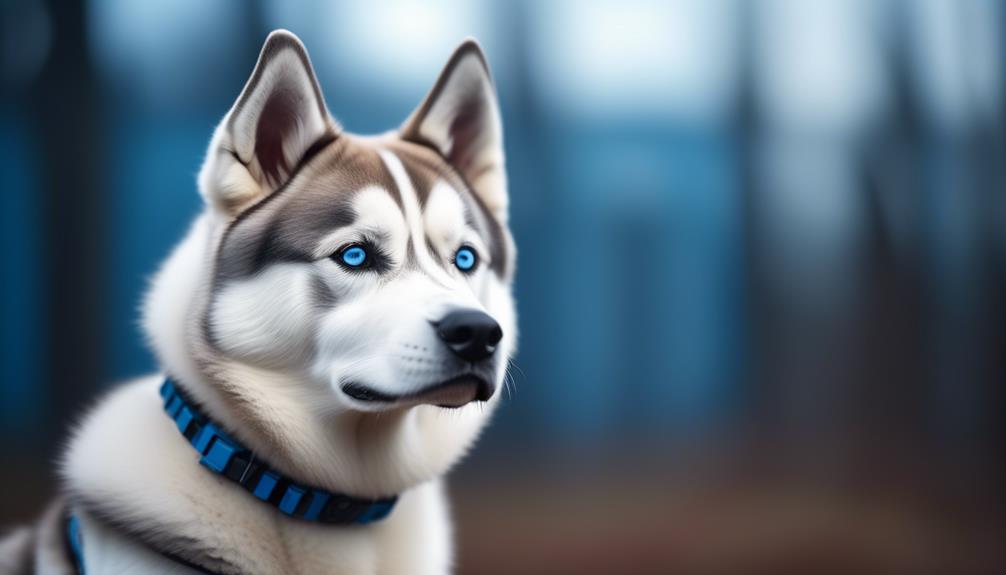
With their striking combination of Akita and Siberian Husky traits, Huskitas are known for their distinctive physical appearance. These mixed breed dogs typically have a strong and muscular build, standing between 22 to 25 inches at the shoulder and weighing around 50 to 75 pounds.
Their eyes are often almond-shaped and can be blue, brown, or a combination of both. Huskitas have a dense coat that comes in a variety of colors, including black, white, gray, and brown. Their double coat keeps them well-insulated in cold weather. They've erect ears and a bushy tail that curls over their back.
Temperament and Personality
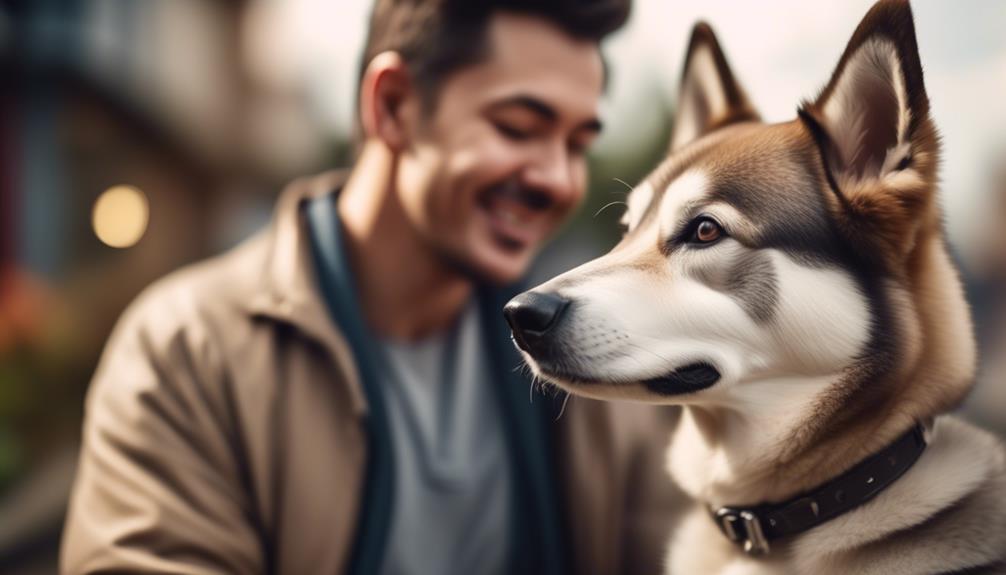
When considering the temperament and personality of Huskitas, it's important to understand their unique characteristics and traits. Here are three key aspects of their temperament and personality:
- Independent yet affectionate: Huskitas are known for their independent nature, but they also have a loving and affectionate side. They enjoy spending time with their family and are often loyal and protective.
- Energetic and playful: Huskitas inherit their parents' high energy levels and love for play. They thrive in active households where they can engage in plenty of exercise and mental stimulation. Be prepared for lots of outdoor activities and playtime to keep them happy and content.
- Alert and watchful: With their protective instincts, Huskitas make excellent watchdogs. They're naturally alert and watchful, always keeping an eye out for potential threats. This makes them great at keeping your home safe and secure.
Understanding these aspects of their temperament can help you provide the right environment and training for your Huskita to thrive.
Exercise and Activity Needs
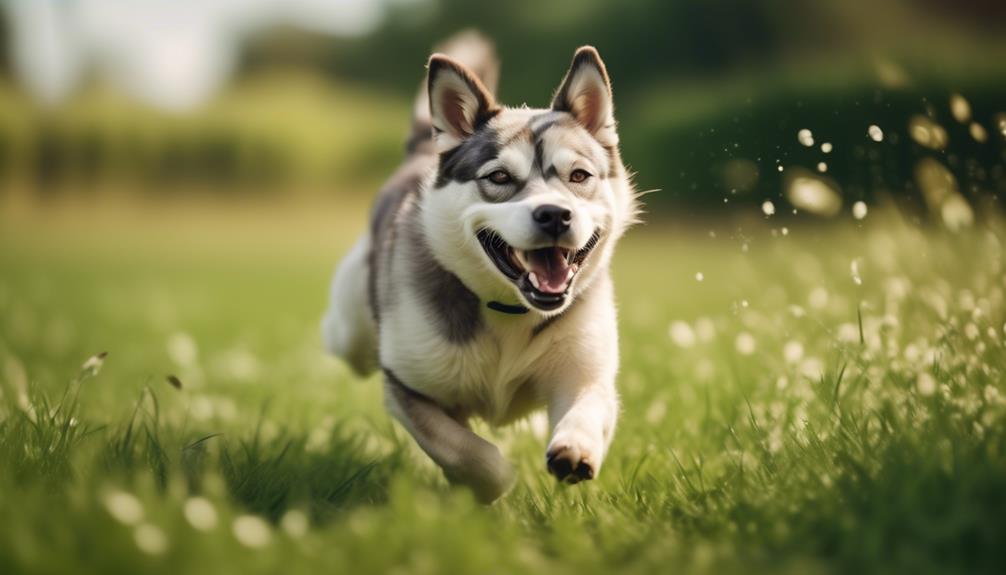
To ensure the well-being and happiness of your Huskita, it's important to meet their exercise and activity needs.
Huskitas are energetic dogs that require a significant amount of physical exercise. Daily walks, runs, or playtime in a securely fenced yard are necessary to keep them mentally and physically stimulated. Engaging in activities such as hiking, jogging, or participating in dog sports can also be beneficial for their overall well-being.
Since Huskitas have a strong prey drive, it's crucial to keep them on a leash or in a secure area to prevent them from chasing after small animals. Providing them with puzzle toys or interactive games can help satisfy their mental stimulation needs.
Regular exercise not only helps keep your Huskita physically fit, but it also helps prevent boredom and destructive behaviors.
Training and Socialization
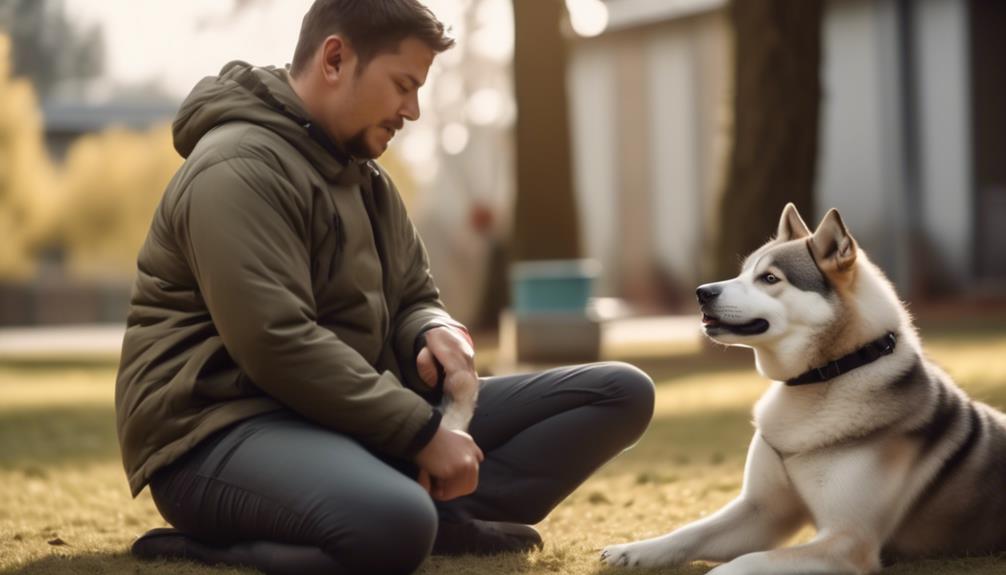
Training and socialization are crucial for a well-behaved and well-adjusted Huskita. To ensure your Huskita becomes a well-rounded companion, consider the following:
- Begin training early: Start socializing your Huskita puppy from a young age to expose them to different people, animals, and environments. This will help them develop good manners and prevent behavioral issues later on.
- Positive reinforcement: Use positive reinforcement techniques such as treats, praise, and rewards to encourage desired behaviors. This will create a positive association and make training more enjoyable for your Huskita.
- Consistency is key: Establish consistent rules and routines to provide structure for your Huskita. This will help them understand what's expected of them and promote obedience.
Health Issues and Care
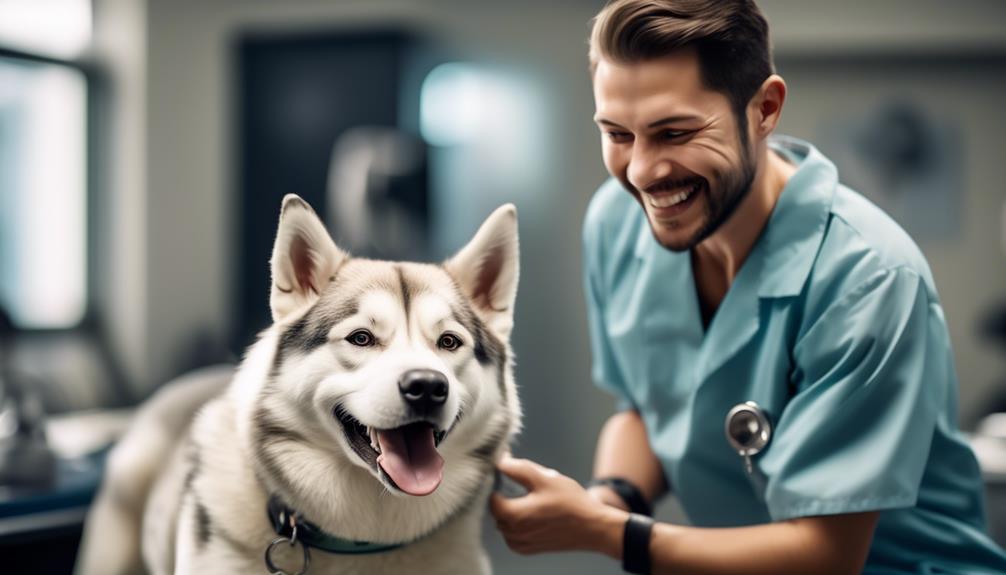
Now let's turn our attention to the important topic of the health issues and care of Huskitas. Huskitas may face health conditions such as hip dysplasia, epilepsy, and blood diseases. To ensure their well-being, regular veterinary checkups, exercise, grooming, and dental care are necessary. Their large breed status requires a diet formulated for high energy, and portion sizes and nutritional needs may vary. Below is a table summarizing the health issues and care of Huskitas:
| Health Issues | Symptoms | Care and Prevention |
|---|---|---|
| Hip Dysplasia | Difficulty walking, lameness, pain | Regular exercise, weight management, joint supplements |
| Epilepsy | Seizures, loss of consciousness | Medication, regular vet checkups |
| Blood Diseases | Anemia, clotting disorders | Regular blood tests, appropriate treatment |
| Dental Problems | Bad breath, tartar buildup | Regular brushing, dental cleanings |
| Grooming Needs | Thick double coat, shedding | Regular brushing, occasional bathing |
Grooming Requirements
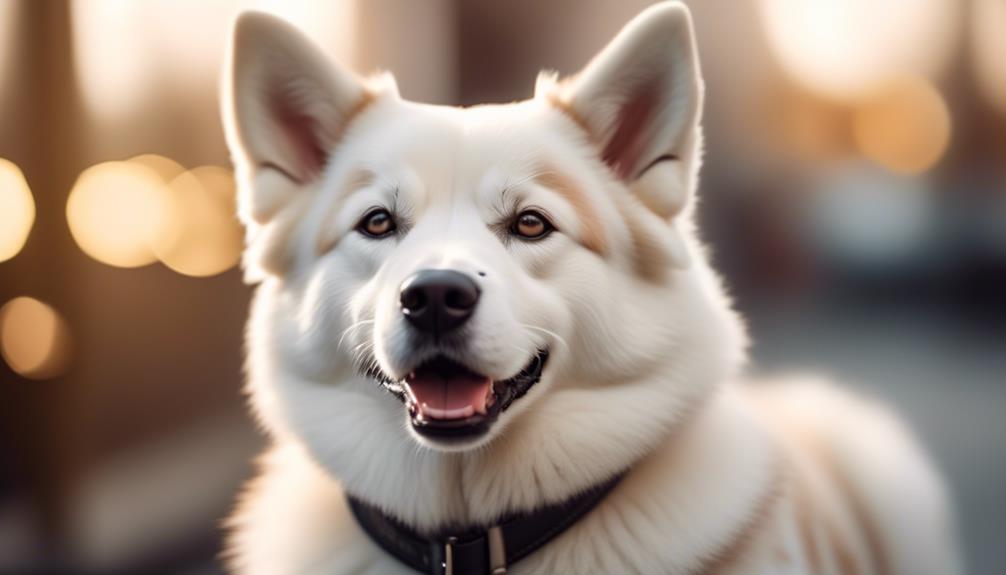
Grooming for Huskitas is essential to maintain their thick double coat and manage shedding. To keep your Huskita looking its best, here are three important grooming requirements to keep in mind:
- Regular brushing: Huskitas have a dense double coat that requires frequent brushing to prevent matting and keep their fur healthy. Brushing also helps to remove loose hair and reduce shedding.
- Bathing as needed: While Huskitas are generally clean dogs and don't have a strong odor, they may need bathing occasionally to keep their coat clean and free from dirt and debris. Use a gentle dog shampoo and ensure thorough rinsing to avoid skin irritation.
- Nail trimming: Regular nail trimming is crucial for Huskitas to prevent their nails from becoming too long and causing discomfort or potential injury. Invest in a high-quality nail trimmer and take care not to cut too close to the quick.
Diet and Nutrition
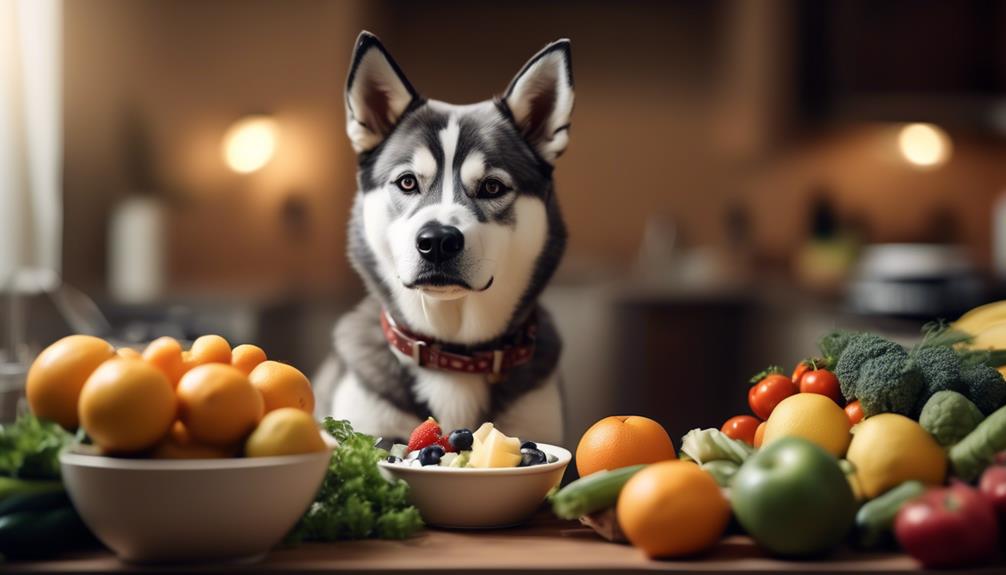
To ensure the overall health and well-being of your Huskita, it's important to provide them with a balanced and nutritious diet. As a large breed with high energy, your Huskita will require a diet formulated for their specific needs.
It's recommended to feed them a high-quality dog food that's appropriate for their age, size, and activity level. Look for a brand that includes real meat as the first ingredient and avoids fillers or artificial additives.
Portion sizes may vary depending on your Huskita's weight and activity level, so it's important to consult with your veterinarian to determine the appropriate amount to feed.
Additionally, make sure your Huskita always has access to fresh water and avoid feeding them table scraps or foods that are toxic to dogs.
Living Arrangements and Space Requirements
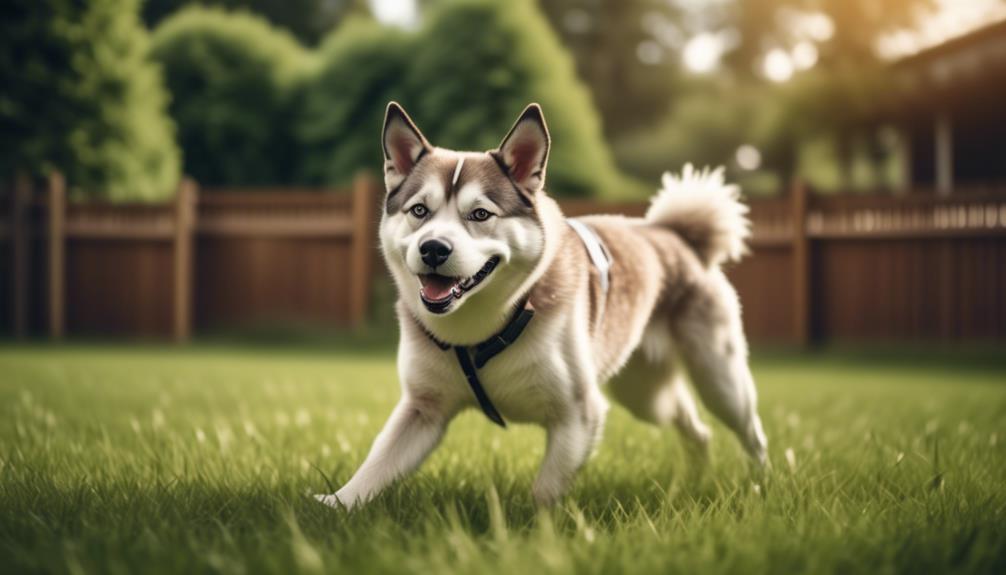
Are you wondering about the living arrangements and space requirements for a Huskita mixed dog breed? Here are some points to consider:
- Huskitas are active and energetic dogs that require plenty of space to run and play.
- Ideally, they'd thrive in a house with a large, securely fenced yard where they can freely exercise.
If you live in an apartment or have a smaller living space, it's important to provide them with frequent and long outdoor walks or trips to a nearby dog park to meet their exercise needs.
Compatibility With Children
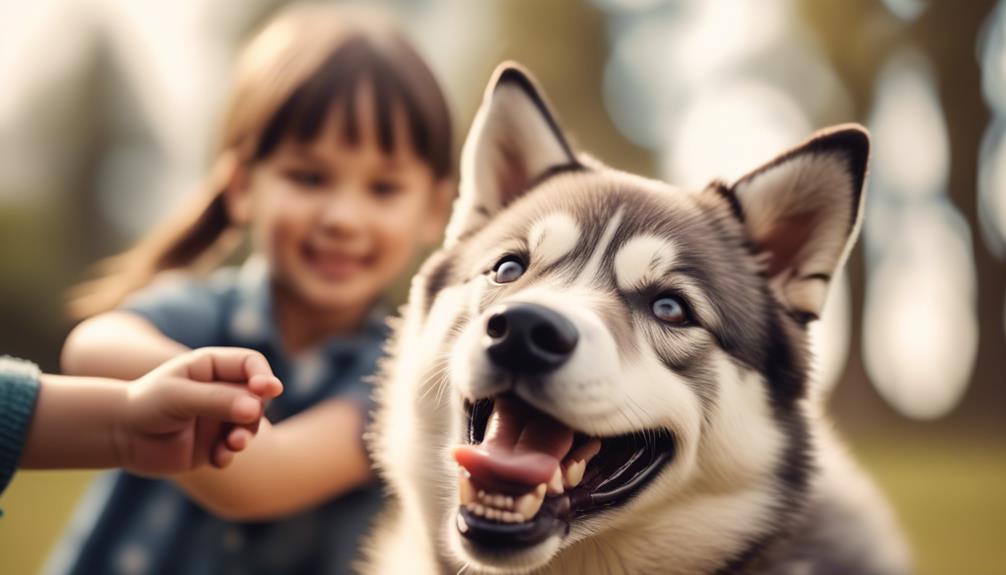
If you have children and are considering getting a Huskita mixed dog breed, it's important to know about their compatibility with kids. Huskitas are known to be good with children and can make great family pets. They're generally friendly, playful, and protective, which can make them great companions for kids.
However, it's important to note that every dog is unique and individual temperaments can vary. It's crucial to socialize your Huskita from a young age and supervise interactions between the dog and your children.
Additionally, teaching your children how to properly interact with the dog, such as not pulling on their ears or tail, is essential. With proper training, socialization, and supervision, Huskitas can be wonderful and loving companions for children.
Compatibility With Other Pets
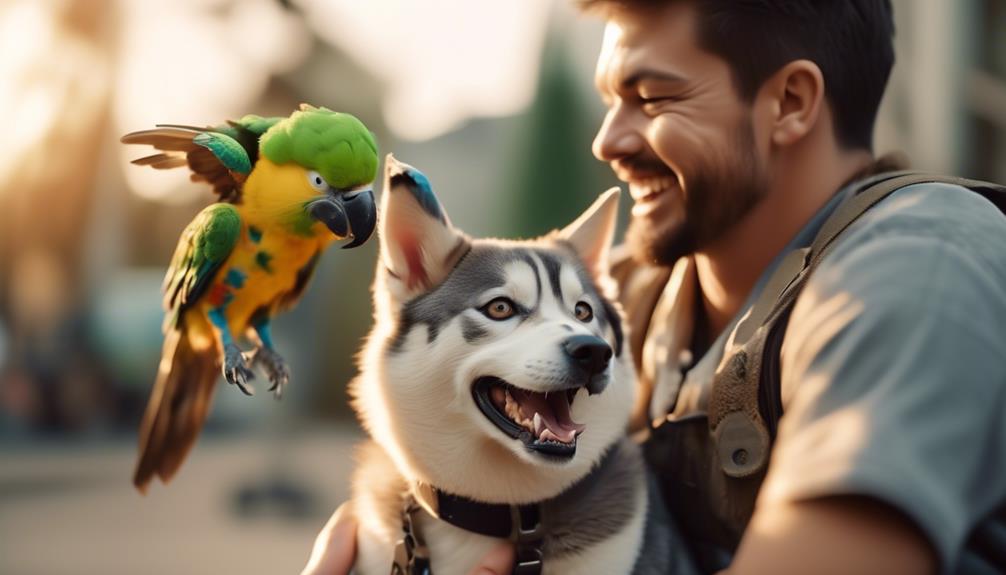
When introducing your Huskita mixed dog breed to other pets in your household, it's important to consider their compatibility and take necessary precautions for a harmonious coexistence. Here are a few things to keep in mind:
- Slow and supervised introductions: Gradually introduce your Huskita to other pets, starting with brief supervised interactions. This allows them to get to know each other in a controlled environment.
- Respect personal space: Give each pet their own designated space where they can retreat to if needed. This helps prevent any territorial issues and allows for a peaceful coexistence.
- Positive reinforcement: Reward good behavior and positive interactions between your Huskita and other pets. This encourages friendly and cooperative behavior and reinforces the idea of getting along.
Adoption and Rescue Options

Consider adopting a Huskita from a local shelter or breed-specific rescue to provide a loving home for a mixed breed dog.
Many Huskitas end up in shelters or rescue groups, so adoption is encouraged.
By adopting a Huskita, you not only give them a second chance at a happy life, but you also gain a loving and loyal companion.
Check your local shelters or breed-specific rescues to see if there are any Huskitas available for adoption. These organizations can provide you with information about the dog's background, temperament, and any specific needs they may have.
Adopting a Huskita is a wonderful way to make a positive impact on a dog's life and experience the joy of having a mixed breed companion.
Frequently Asked Questions
Are Huskitas Hypoallergenic?
No, Huskitas are not hypoallergenic. They have a double coat that sheds heavily, which can trigger allergies in some people. Regular grooming and cleaning can help minimize allergens, but they are not considered hypoallergenic dogs.
How Often Should Huskitas Be Groomed?
Huskitas should be groomed regularly to keep their coat healthy and free of tangles. A good rule of thumb is to brush them at least once a week and bathe them as needed to maintain cleanliness.
Do Huskitas Have a Strong Prey Drive?
Yes, Huskitas have a strong prey drive. They inherit this instinct from their parent breeds, the Akita and Siberian Husky. It's important to provide them with proper training and supervision to manage their prey drive.
Can Huskitas Be Left Alone for Long Periods of Time?
Yes, Huskitas can be left alone for long periods of time, but it is not recommended. They are social dogs and may experience distress or develop behavioral issues when left alone for extended periods.
What Is the Average Lifespan of a Huskita?
The average lifespan of a Huskita is around 10 to 13 years. Regular veterinary checkups, proper care, and a healthy diet can help ensure that your Huskita lives a long and happy life.
What Are the Characteristics and Facts of the Huskita Mixed Dog Breed Compared to the Lowchen Dog Breed?
The Huskita mixed dog breed is a combination of the traits of the Siberian Husky and the Akita. These dogs are known for their high energy and intelligence, making them excellent working and companion animals. On the other hand, the lowchen dog breed characteristics include its small size and friendly, playful nature.
Conclusion
In conclusion, the Huskita mixed dog breed is a unique and energetic companion that combines the best qualities of the Akita and Siberian Husky.
With their strong and active nature, Huskitas thrive with plenty of outdoor exercise.
While they can adapt well to apartment living, it's important to consider factors such as size, energy levels, and behavior towards neighbors.
With proper training, socialization, and care, Huskitas can make wonderful additions to any family.
Consider adopting a Huskita and enjoy their all-around friendliness and compatibility with children and other pets.




